Planting method and Propagation of Flowers-Peony
Peony is a unique woody precious flower in China, which is colorful, elegant, rich and dignified, fragrant and rich, and has a wide variety, known as "national color Tianxiang" and "king of flowers". So how are peonies raised? Is there any good method in breeding? What matters do you need to pay attention to when raising peonies? Please read on with me with questions.
Cymbal
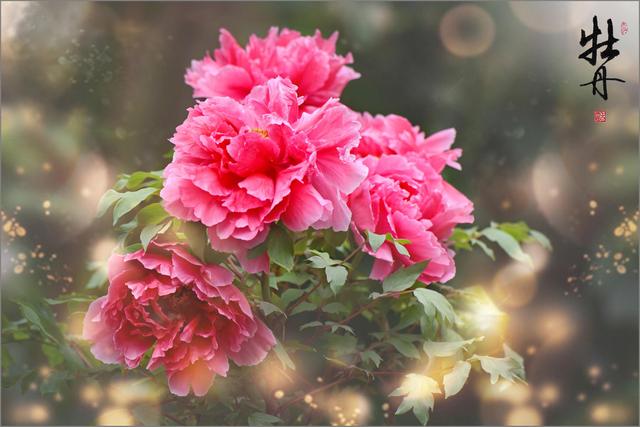
Culture methods of peony flowers (basic knowledge):
The best breeding time: planting is generally from late September to early October.
The best growth soil: peony requires loose, fertile, well-drained neutral soil or sandy soil, avoid sticky heavy soil or low temperature planting.
Growth humidity requirements: peony watering should not be much, generally not watered in winter. After May, the weather is getting hotter and hotter. If the dry land is dry, it can be watered appropriately, but it should be dry rather than wet. Only after the soil is dry can it be watered.
The best growth temperature: peony cold-resistant, not resistant to high temperature. In both eastern and central China, the flower buds began to expand gradually when the winter temperature reached 4 ℃. The suitable temperature is 16-20 ℃, and it will not blossom below 16 ℃. At high temperatures in summer, plants are semi-dormant.
The best growth light: peony likes the sun, but does not like the sun. When planting, you need to choose a higher eastward sunny place, and the potted plant should be placed on a sunny eastward balcony, such as a south balcony or roof platform, and shade in the west.
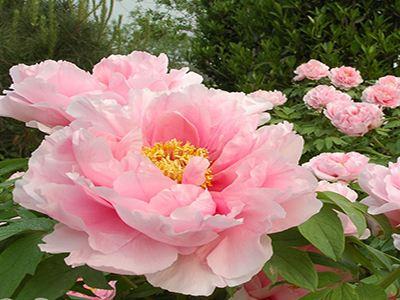
Cymbal
Matters needing attention in cultivating peony flowers:
To apply fertilizer:
The main results are as follows: (1) the basic fertilizer of peony must be sufficient. Base fertilizer can be compost, cake manure or manure.
(2) it is usually better to apply fertilizer three times a year, that is, spraying fertilizer and water dominated by phosphate fertilizer and flower Zhuangtiling half a month before flowering.
(3) compound fertilizer was applied half a month after flowering, and compost was applied before winter to ensure flowering in the second year. Spraying new high-fat membrane can greatly improve the effective component rate of pesticides.
(4) the nutrients in the basin are limited, and only by topdressing at the right time can we ensure the normal growth and development of peony. Topdressing can start from the spring of the following year, using sesame, peanuts and bean cake blisters after fermentation. The application should be mixed with water, and fertilizer and water should be applied once or twice a week during the growing period.
Watering essentials:
(1) there is a proverb and a common saying: "Peony should be dry rather than wet." Peony is a deep-rooted fleshy root, afraid of long-term stagnant water, usually watering should not be too much, should be properly dry.
(2) because of its small capacity, less soil and limited water holding capacity, peony pot cultivation must be watered in time in order to maintain the normal water demand of social dans. after cutting, it should be watered once, and then water once every 3-4 days to keep the pot soil moist.
(3) if the amount of water and soil are too wet. It is easy to make the branches and leaves grow, and the roots will rot if they are too wet or water for a long time. Especially in summer and autumn, the humidity of the basin soil should be controlled so that it is not dry or watered. When it is dry in summer, it should be watered in the morning or at night.
(4) there is no need to water in autumn as long as it is not too dry. If the buds are too wet, they will not blossom in spring.
Pruning essentials:
(1) cut off the remaining flowers after the peony flowers are withered. In order to make the crown low and flowers dense, it can be pruned before July to avoid the influence of dense branches on flowering, and it is advisable to leave 5-6 main branches per plant.
(2) in order to improve the ventilation and light transmission conditions of tree peony and concentrate nutrients, it is also necessary to reshape and double cut after defoliation in autumn and winter. Cut off dense branches, such as parallel branches, cross, introverted and pest techniques, etc., to keep the plant in a beautiful shape.
(3) potted peony pruning can be divided into winter pruning and spring and summer pruning. In spring, the remaining buds of potted peony should be selected, the excess buds in the rhizosphere should be erased, the introverted branches, cross branches and heavy branches should be cut off, and the weak branches and excess branches should be removed to ensure that the plant shape is beautiful, ventilated and transparent. The residual flowers can be cut off in summer, and the diseased and dead branches can be cut off after falling leaves at the end of autumn.
Pot soil replacement: when potted peonies grow for three or four years, they need to be planted in large pots or ramets with new fertile soil in autumn.
Main points of reproduction:
1. Ramet. The ramet propagation of tree peony has been widely used in the Ming Dynasty. The specific methods are as follows: (1) the large tree peony with luxuriant growth is dug up and separated from the texture junction of the root system. (2) the number of molecular plants per plant depends on the size of the original plant, with more points for the larger ones and less for the smaller ones. Generally, every 3-4 branches is a seed plant, and has a more complete root system. (3) add a little sulphur powder and mud. Smear the wound on the root, wipe it evenly, and then you can plant it separately. (4) the time of ramet propagation is from the Autumn Equinox to Frosts Descent every year, and it is better to do it at the right time. (5) ramet cultivation has no serious effect on root growth, and some new roots and a small number of plant buds can be produced after ramet cultivation. (6) the mother plant of peony ramet is generally made use of robust clumps. In the mother plant for ramet propagation, the tillers should be retained as far as possible, and all the roots on the new seedlings should be retained so that the new seedlings can grow for 5 years.
2. Grafting. The grafting propagation of peony can be divided into two kinds according to the different rootstocks used, one is wild peony, the other is peony root. There are three common grafting methods of peony: embedding method, abdominal grafting method and bud grafting method.
3. Cutting. Cutting propagation is a method to propagate new plants by using the adventitious roots of peony branches, and it is one of the methods of asexual propagation. The method is to cut off the branches of the cuttings, detach them from the mother plant, and then insert them into the soil or other substrates to make them take root and become new plants. For the branches propagated by peony cuttings, the annual soil buds from the roots of the peony should be selected, or during the shaping and pruning of the peony, the branches with full stems and full terminal buds without diseases and insect pests should be selected as ears, with a length of 10 cm to 18 cm. The root of peony is fleshy root, which likes high dryness, avoid dampness and is resistant to drought. Therefore, the nursery bed should be ventilated and sunny, and a high bed should be built to raise seedlings. When cutting, irrigate one bed after cutting, and water it thoroughly at one time.
4. Sow seeds. Sowing and reproduction, which is a method of sexual reproduction, is to reproduce with seeds or to select new varieties. Before sowing, the soil must be carefully arranged and disinfected, the land should be ploughed and carefully cultivated, and sufficient base fertilizer should be applied. Then build a 70~80cm wide small bed, hole sowing or strip sowing can be done. Sowing should not be too deep, with a degree of 3 to 4 centimeters, and the soil should be covered with a flat surface after sowing. Then gently stabilize the soil, and then pour water through.
5. Crimping. Peony striping method is a method of propagation based on the fact that branches can produce adventitious roots, pressing branches or burying them with soil on the plant without leaving the mother plant, keeping the soil moist, rooting in the buried place, and then cutting off and planting to become a new plant, which is also a method of asexual reproduction of peony. This method mainly includes sleeve basin soil pressing method and double flat method.
Pest control:
1. Brown spot. Brown spot disease, at the beginning of the leaf appeared yellow-green spots, and then gradually expanded to form brown or black markings. Bordeaux liquid can be sprayed once or twice a month, or 3 times if the condition is serious. The seriously infected leaves should be cut off and burned to prevent the vine from spreading.
2. Root rot. Root rot specifically harms the roots of peonies. The disease is characterized by blackening and decay of the roots, hindering growth, and heavy ones can lead to pruning death. To prevent the disease, it is necessary to check carefully when planting ramets. If you find that there is a diseased root, you must cut off and burn it, and sprinkle some sulfur powder in the planting hole when planting.
3. Blowing cotton shell insects. The common pest is cotton-blowing insect, which can be sprayed with 1500 times of omethoate emulsion and coated with stone-sulfur mixture in winter or early spring, which also has a good control effect.
Cymbal
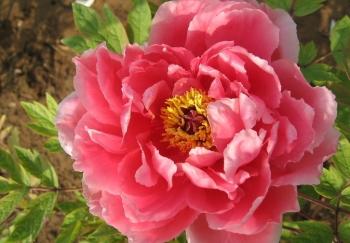
Experience of cultivating peony flowers:
1. Peony is cold-resistant and not resistant to high temperature. In both eastern and central China, the flower buds began to expand gradually when the winter temperature reached 4 ℃. In the process of cultivating peony flowers, we should pay attention to its temperature, humidity, light and other factors. At the same time, we should pay attention to the nuisance of diseases and insects.
2. Peony likes light and high dryness, so it should be placed in the place where the sun is ventilated and the light is sufficient. High temperature and rainy summer, should be placed under the Arbor to prevent leaf burns. In winter, it can be moved indoors or buried in a sunny place, and the surface is covered with sawdust to make it safe to survive the winter. From March to April of the following year, the weather became warmer and then moved to the place where the light was sufficient.
3. Peony avoid long rain, too wet and hot and hot, and encounter high temperature and humid weather for a long time. It will scorch the leaves and rot the roots. In the hot summer period, the potted peony can be moved to the seedling shed for shade, or it can be buried in the soil to prevent heat and cool down, and keep good drainage and ventilation.
4. spray water on branches and leaves and around it every day when there is no rain, increase air humidity, protect the water supply during the period of peony flower bud differentiation, pay attention to drainage in rainy season, and pour the flowerpot on cloudy and rainy days to prevent stagnant water in the pot.
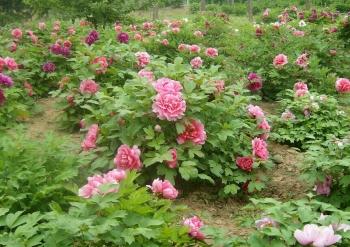
- Prev
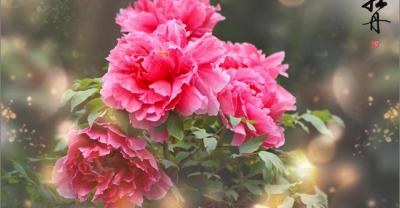
Reasons for planting abnormal fruits of strawberries
Strawberry is a kind of perennial herb fruit tree with high nutritional and economic value, which is widely distributed. Its fruit is bright, soft and juicy.
- Next

What kind of medicine is the most profitable to grow? Basic compilation of essential knowledge for growing Chinese Medicinal Materials to become Rich
In recent years, with the decline in grain prices, many farmers in non-traditional medicine-growing areas want to change the passive situation of not making money by planting traditional Chinese medicine.
Related
- Fuxing push coffee new agricultural production and marketing class: lack of small-scale processing plants
- Jujube rice field leisure farm deep ploughing Yilan for five years to create a space for organic food and play
- Nongyu Farm-A trial of organic papaya for brave women with advanced technology
- Four points for attention in the prevention and control of diseases and insect pests of edible fungi
- How to add nutrient solution to Edible Fungi
- Is there any good way to control edible fungus mites?
- Open Inoculation Technology of Edible Fungi
- Is there any clever way to use fertilizer for edible fungus in winter?
- What agents are used to kill the pathogens of edible fungi in the mushroom shed?
- Rapid drying of Edible Fungi

